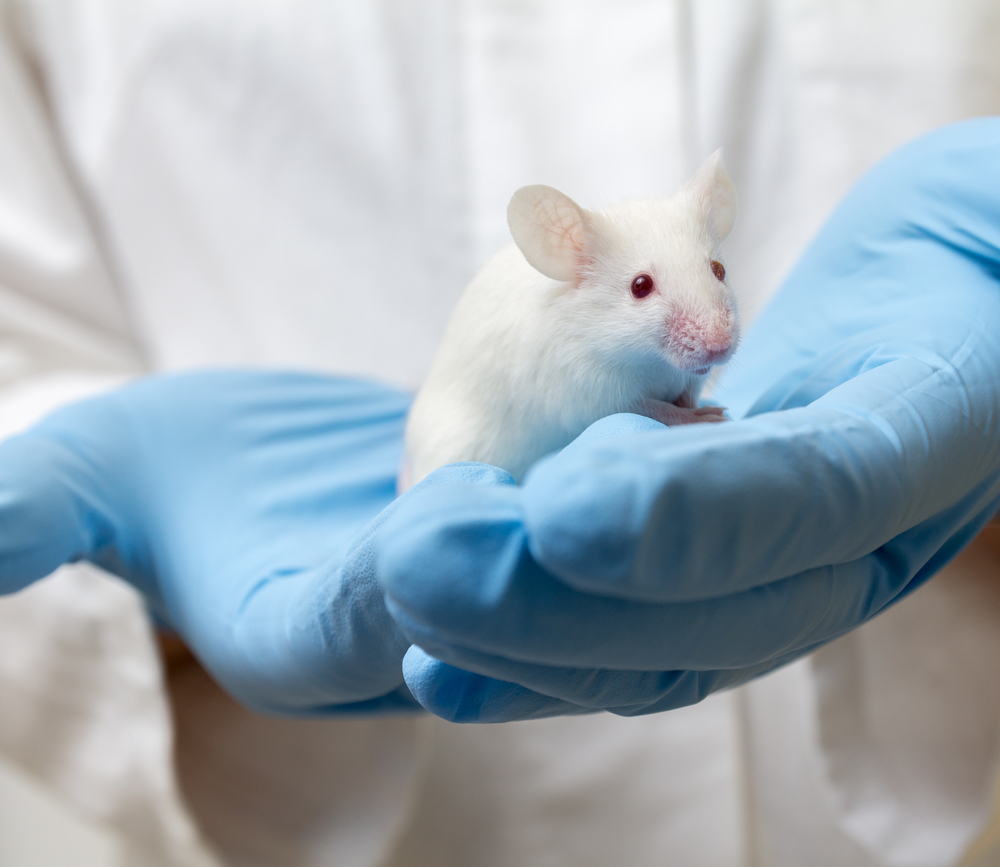Targeted Gene Therapy Prevents Neurological Symptoms, Extends Survival in Gaucher Mouse Model, Study Shows
Written by |

Gene therapy targeting nerve cells restored the production of beta-glucocerebrosidase (GCase) — the defective enzyme in Gaucher disease — in a mouse model of the disorder, preventing neurodegeneration and prolonging survival, a recent study shows.
The study, “Systemic AAV9 gene therapy using the synapsin I promoter rescues a mouse model of neuronopathic Gaucher disease but with limited cross-correction potential to astrocytes,” was published in the journal Human Molecular Genetics.
Gaucher is caused by mutations in the GBA gene, which lead to impaired activity of GCase and the accumulation of a lipid (fat) called glucocerebroside in cells.
The disease is divided into different types. While type 1 — the most common form — typically does not affect the central nervous system (brain and spinal cord), both type 2 and type 3 lead to neurological symptoms and damage. Type 2, the most severe form, has an earlier onset and faster progression than type 3.
Neurological symptoms are often accompanied by neuroinflamation due to the activation of brain cells called astrocytes and microglia. Astrocytes are a group of star-shaped cells that support neurons and, similar to microglia, are key in the brain’s immune response.
Although effective in milder forms of Gaucher, enzyme replacement therapy is unable to ease neurological symptoms because it cannot cross the blood-brain barrier — a highly selective membrane that shields the brain and spinal cord from the peripheral blood circulation.
Gene therapy delivering a working copy of the GBA gene to cells — including brain cells — is a potential option to tackle this problem.
A previous study from a team at the University College London and their colleagues showed that delivering a gene therapy before birth restored the production of GCase in mice engineered to mimic the symptoms of Gaucher disease type 2, preventing nerve cell death and prolonging survival.
The gene therapy used a modified, harmless adeno-associated virus serotype 9 (AAV9) as carrier to introduce GBA into brain cells. Yet, despite positive results, the brains of treated mice were not completely free of disease-related processes.
Aiming to enhance even further treatment delivery to the brain, the team developed a new gene therapy using a human neuron-specific “switcher” that controls the activity of the GBA gene. This switcher, called a promoter, is from the synapsis I (SYN1) gene which is found only in nerve cells.
The researchers delivered the new gene therapy into the blood of newborn mice engineered to lack the GBA gene.
First, with the help of a fluorescent tag, the investigators found the gene therapy throughout the whole brain, particularly in regions most affected by Gaucher. They also confirmed that the targeted brain cells were neurons. Upon examination, the therapy also was found in organs commonly affected in Gaucher, including the liver, spleen, lungs, and heart. This means that the new promoter also may be effective in visceral organs, which are the main cardiovascular, pulmonary, and gastrointestinal structures.
In human cells cultured in a lab dish, the scientists found that the human GBA gene produced the generation of working GCase, with its levels being five times higher than in untreated cells.
In healthy mice, the vector showed no signs of toxicity, hypertrophy (enlargement) in any region of the brain, nor neuroinflammation.
Then, the researchers administered the new gene therapy on the day of birth to mice altered to mirror Gaucher disease. While untreated mice developed progressive neurological symptoms within 10 days, the animals given the gene therapy showed extended survival.
The results of a test of the self-righting reflex, measuring the ability to correct body position, revealed that treated mice were able to right themselves in less than one second. This was in contrast to the test failure seen in untreated animals.
At 60 days of age, treated mice also showed no motor symptoms in the rotarod test, which measures coordination and balance.
Other tests that measured gait and exploratory behavior showed that mice given the therapy had similar results to healthy mice (controls).
Treated animals showed GCase activity in nerve cells throughout the brain, with 68% activity seen in the control animals.
Further analysis showed no evidence of brain shrinkage and a comparable number of neurons between treated and control mice. This suggests that the gene therapy prevents neuron loss and degeneration.
The researchers also found that, despite the presence of some Gaucher cells (macrophages with accumulated glucocerebroside), the therapy prevented spleen enlargement. In addition, these cells did not accumulate in the liver, spleen and heart tissue.
“Our study validated neuron-targeted gene therapy as a potential option for the treatment of severe neurodegeneration in Gaucher disease,” the researchers said.
As suggested with this gene therapy, approaches that “can improve gene delivery and expression in different organs,” may have “greater therapeutic effects on both the neurological and visceral pathology,” they added.


